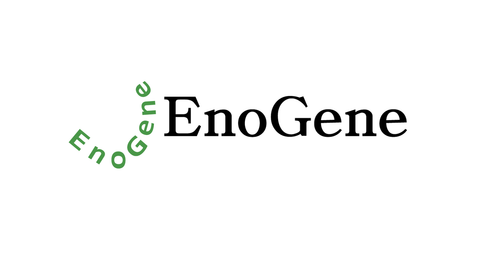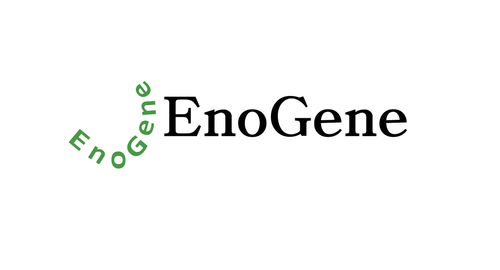Product Description
EPHA4 Antibody (Center) [APR11858G] | Leading Biology
Product Category: Polyclonal Antibodies
Host: Rabbit
Species Reactivity: H, M
Specificity: This EPHA4 antibody is generated from a rabbit immunized with a KLH conjugated synthetic peptide between 383-417 amino acids from the Central region of human EPHA4.
Cellular Localisation: Cell membrane; Single-pass type I membrane protein. Cell projection, axon Cell projection, dendrite. Cell junction, synapse, postsynaptic density membrane. Early endosome. Cell junction, adherens junction {ECO:0000250|UniProtKB:Q03137}. Note=Clustered upon activation and targeted to early endosome.
Molecular Weight: 109860
Clone: Polyclonal
Gene Name: EPHA4
Gene ID: 2043
Function: Receptor tyrosine kinase which binds membrane-bound ephrin family ligands residing on adjacent cells, leading to contact-dependent bidirectional signaling into neighboring cells. The signaling pathway downstream of the receptor is referred to as forward signaling while the signaling pathway downstream of the ephrin ligand is referred to as reverse signaling. Highly promiscuous, it has the unique property among Eph receptors to bind and to be physiologically activated by both GPI- anchored ephrin-A and transmembrane ephrin-B ligands including EFNA1 and EFNB3. Upon activation by ephrin ligands, modulates cell morphology and integrin-dependent cell adhesion through regulation of the Rac, Rap and Rho GTPases activity. Plays an important role in the development of the nervous system controlling different steps of axonal guidance including the establishment of the corticospinal projections. May also control the segregation of motor and sensory axons during neuromuscular circuit development. In addition to its role in axonal guidance plays a role in synaptic plasticity. Activated by EFNA1 phosphorylates CDK5 at 'Tyr-15' which in turn phosphorylates NGEF regulating RHOA and dendritic spine morphogenesis. In the nervous system, plays also a role in repair after injury preventing axonal regeneration and in angiogenesis playing a role in central nervous system vascular formation. Additionally, its promiscuity makes it available to participate in a variety of cell-cell signaling regulating for instance the development of the thymic epithelium. During development of the cochlear organ of Corti, regulates pillar cell separation by forming a ternary complex with ADAM10 and CADH1 which facilitates the cleavage of CADH1 by ADAM10 and disruption of adherens junctions (By similarity) .
Summary: Tissue Location: Ubiquitous.
Form: N/A
Storage: Store at +4°C short term. For long-term storage, aliquot and store at -20°C or below. Stable for 12 months at -20°C. Avoid repeated freeze-thaw cycles.
Application: WB
Dilution: WB--1:1000
Synonyms: Ephrin type-A receptor 4, EPH-like kinase 8, EK8, hEK8, Tyrosine-protein kinase TYRO1, Tyrosine-protein kinase receptor SEK, EPHA4, HEK8, SEK, TYRO1
 Euro
Euro
 USD
USD
 British Pound
British Pound
 NULL
NULL

![EPHA4 Antibody (Center) [APR11858G] EPHA4 Antibody (Center) [APR11858G]](https://cdn11.bigcommerce.com/s-452hpg8iuh/images/stencil/1280x1280/products/869543/1161610/logo__92149.1659788186__06144.1659865721.png?c=2)
![EPHA4 Antibody (Center) [APR11858G] EPHA4 Antibody (Center) [APR11858G]](https://cdn11.bigcommerce.com/s-452hpg8iuh/images/stencil/100x100/products/869543/1161610/logo__92149.1659788186__06144.1659865721.png?c=2)
![EPHA4 Antibody (Center) [APR11858G] EPHA4 Antibody (Center) [APR11858G]](https://cdn11.bigcommerce.com/s-452hpg8iuh/images/stencil/500x659/products/869543/1161610/logo__92149.1659788186__06144.1659865721.png?c=2)
![EPHA4 Antibody (Center) [APR11859G] EPHA4 Antibody (Center) [APR11859G]](https://cdn11.bigcommerce.com/s-452hpg8iuh/images/stencil/500x659/products/869542/1161609/logo__92149.1659788186__39414.1659865720.png?c=2)
![EPHA4 Antibody (Center) [APR11857G] EPHA4 Antibody (Center) [APR11857G]](https://cdn11.bigcommerce.com/s-452hpg8iuh/images/stencil/500x659/products/869562/1161629/logo__92149.1659788186__37111.1659865736.png?c=2)
![Mouse Epha4 Antibody (Center) [AMM06431G] Mouse Epha4 Antibody (Center) [AMM06431G]](https://cdn11.bigcommerce.com/s-452hpg8iuh/images/stencil/500x659/products/869452/1161519/logo__92149.1659788186__42843.1659865648.png?c=2)
![Mouse Epha4 Antibody (Center) [AMM06432G] Mouse Epha4 Antibody (Center) [AMM06432G]](https://cdn11.bigcommerce.com/s-452hpg8iuh/images/stencil/500x659/products/864897/1156964/logo__92149.1659788186__97036.1659862246.png?c=2)




